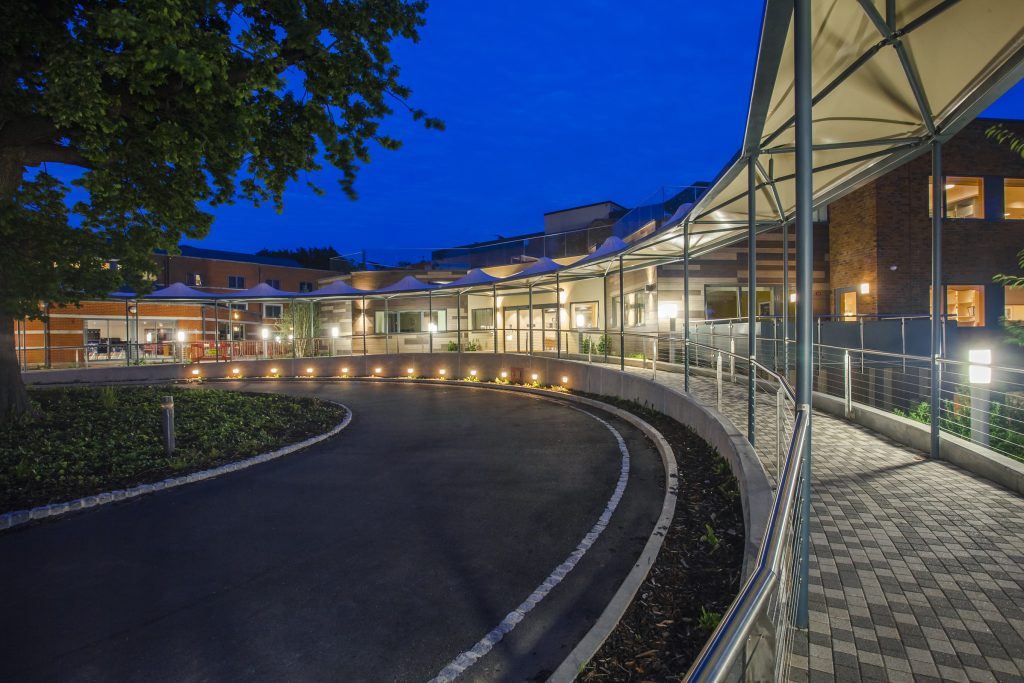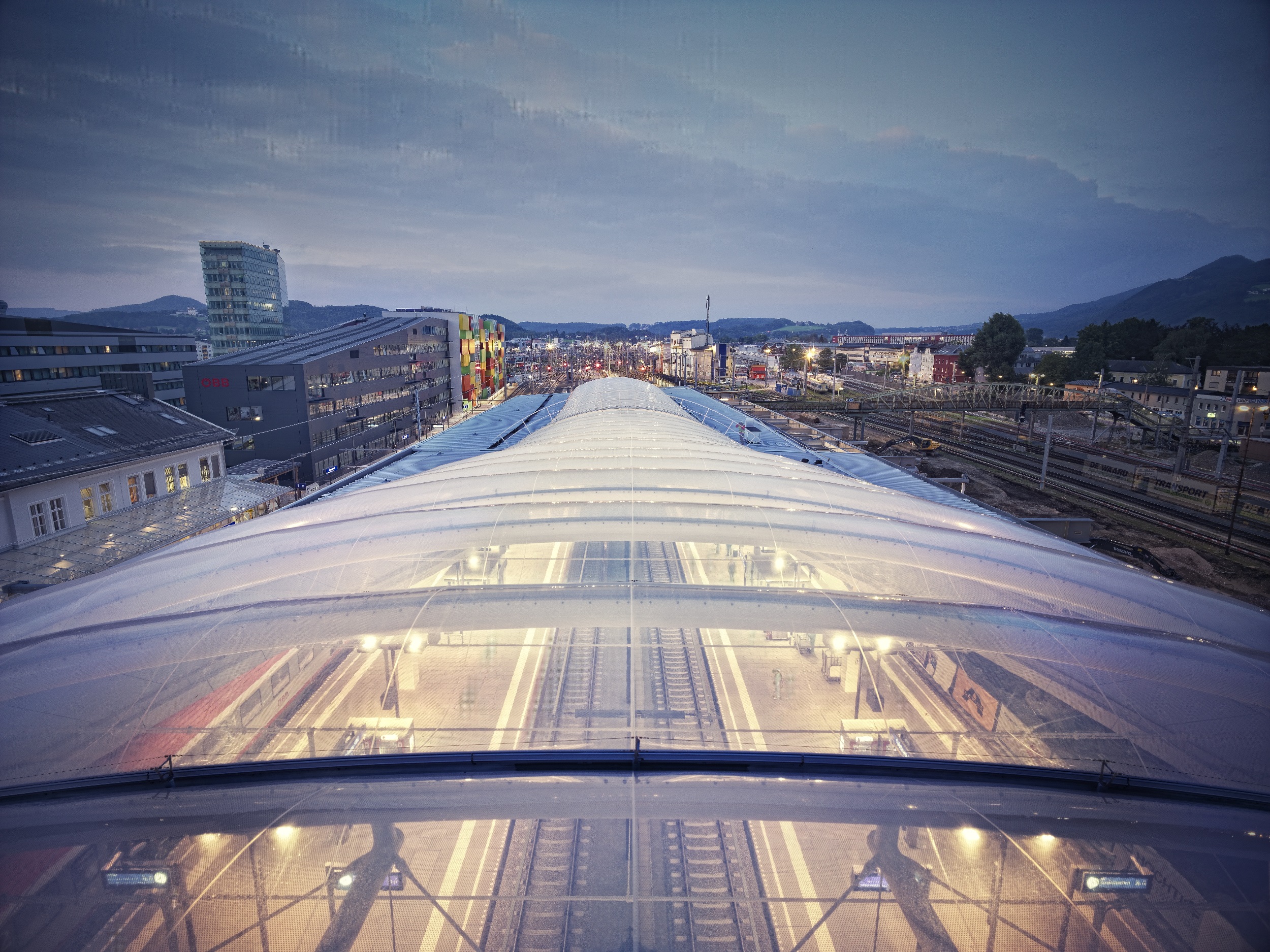Tensile fabrics are becoming more innovative by day thus allowing architects and designers to create iconic spaces. Typically, these fabrics have a tensile strength measuring 10 tonnes both in the warp and weft direction.
All tensile fabric structures are designed to stretch under load, but exhibit varying characteristics with time. When a structural fabric has reached full pretension, it cannot creep under load. During the design stage, each roll of fabric is first tested in a biaxial rig to measure and ascertain the stretch in both the warp and weft thread directions. This process is computerised and thus free of human error.

Tensile fabrics can either be used in external or internal spaces. Where they are to be deployed will determine the attributes of the fabric. Below is a discussion of the types of fabrics used for indoors and outdoors.
External Use Tensile Fabrics
When looking for tensile fabrics for outdoor use, you can go with any of the three main choices which are Poly Vinyl Chloride (PVC), coated polyester, Ethylene Tetra Fluoro Ethylene (ETFE), and Poly Tetra Fluro Ethlene (Teflon) glass cloth.

Coated PVCs
The PVC coating comprises additives such as fire retardants, UV stabilisers, anti-fungicides, and colouring. If you want to enhance the cleanability of your PVC membrane, you can choose a protective fluorinated polymer known as PVDF. PVDF comes in two forms; the weldable version and the non-weldable version. The difference between the two lies in their average lifespans with the former able to last between 15 and 20 years while the latter can serve you for about 10 to 15 years.
Generally, a PVC fabric has a structural lifespan that exceeds 20 years. With continuous usage of the PVC fabric, certain components within the fabric known as plasticisers migrate to the surface and this can make the PVC slightly harder to clean.
Poly Tetra Fluro Ethlene (PTFE)
The components that make up PTFE are inert and this makes this material a natural choice for structures that have a life beyond 15 years. Compared to PVCs, PTFE has a much longer lifespan stretching all the way to 30 years.
Ethylene Tetra Fluoro Ethylene (ETFE)
In today’s design industry, ETFE roof structures have grown in popularity because of the potential it offers. It was originally invented by DuPont for the aeronautics industry, but has grown gradually and made an entry into the mainstream building arena.
The advantages of ETFE include tear resistance, transparency to UV light, and long life stretching to over 20 years. This material is extremely light in weight measuring approximately 1% weight of glass and this is beneficial because it imposes a less dead load on the support framework of the structure.
In cases where high levels of UV and light transmissions are not needed, you can opt for a printed or fritted ETFE that reduces solar gain. On the ecofriendly front, ETFE scores well because it is 100% recyclable and doesn’t require a lot of energy for transportation and installation.
ETFE is not affected by atmospheric pollution, UV light, and other forms of environmental degradation and weathering. All these contribute to its durability.
Internal Use Tensile Fabrics
Three main tensile fabrics are commonly used for interiors. They include cottons, PVC coated glass mesh, and polyurethane coated glass mesh.
Cottons are considered economical and they have the advantage of being available in a variety of colors. However, because of their vulnerability to staining and shrinkage, they are not suited for long term use.
PVC coated glass mesh acts like a sunscreen or theatre gauze and is highly durable. Because of its composition, PVC coated glass can retain its shape, color, and structural form long after installation.
Polyurethane coated glass mesh has an appearance like cotton, but its benefits of durability is what sets it apart.
In exhibition halls where stringent fire standards are to be observed, pure glass meshes are often preferred. ceiling systems which demand open meshes allowing sprinkler systems to operate through them, the best types of tensile fabric to use are mylars and rip stop nylons.
There is lots of development that is going into tensile fabrics especially in customisation, tensile strength and aesthetics. More layers are being added onto fabrics in a bid to enhance their thermal properties.

